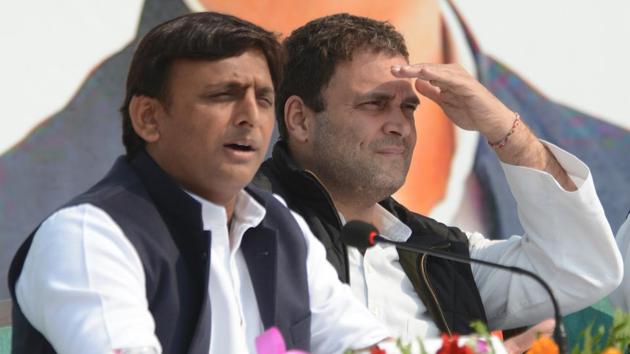Opposition’s idea of grand alliance takes a hit with Modi’s UP, Uttarakhand sweep
The Uttar Pradesh assembly election results and the debacle of the Samajwadi Party-Congress alliance show that the politics of ‘maha gathbandhan’ in the run to the 2019 Lok Sabha polls
The BJP’s dominant show in the Uttar Pradesh assembly polls has put a big question mark over the politics of maha gathbandhan in the run up to the 2019 general elections.

The ‘third front’ alternative – a coalition of big and small parties – have assumed power on two occasions at the Centre and several times in Uttar Pradesh.
Follow Live: Election result updates
As late as 2015, a ‘mahagathbandhan’ of the JD(U), RJD and Congress had successfully checkmated the saffron party in Bihar.
But the near decimation of the Samajwadi Party-Congress alliance in Uttar Pradesh might have ended prospects of a coming together of oppostion parties in the next Lok Sabha polls.
Old socialists, who had successfully orchestrated “identity politics” in the Hindi heartland states in the last three decades, are either dead or have been diminished by advancing age.
Much hope was reposed in the youthful Samajwadi Party leader Akhilesh Yadav to emerge the poster boy of a reinvented brand of socialist politics.
The SP-Congress alliance of UP was no more than a patchwork as compared to the show of complete unity put up by the RJD-JDU-Congress in adjoining Bihar ahead of the 2015 assembly elections.
Akhilesh spurned offers from Ajit Singh’s Rashtriya Lok Dal (RLD) and Nitish Kumar’s Janata Dal (United) to align with the grouping. There was no effort to rope in BSP leader Mayawati for a pre-poll alliance. The absence of Sonia and Priyanka Gandhi also took considerable sheen off the “maha gathbandhan” pitch.
“The outcome may have been somewhat different if more effort had been made in stitching together a genuine alliance,” an SP leader said.
Coalition governments have come into existence on several occasions in UP, but none of these have lasted a full term, mainly due to clash of egos between regional satraps. The SP-Congress alliance was not able to achieve traction with voters on account of this – and other related factors, a veteran UP watcher said.
“It is a thumping loss and devastating setback to ‘alternative politics’. The message is loud and clear: Regional leaders must sink differences and take lessons from the Bihar model. It is a now-or-never situation,” JD (U) spokesperson KC Tyagi said.
UP coalition governments
• 1967: Chaudhary Charan Singh (Bharatiya Kranti Dal) becomes chief minister of the first non-Congress coalition government which lasts 328 days.
• Mulayam Singh Yadav (Janata Dal–Socialist) becomes chief minister in December 1989, supported by Congress. Government lasts one year, 201 days.
• Mulayam Singh Yadav (SP) becomes chief minister in 1993, supported by the BSP. Government lasts one year and 181 days.
• Mayawati (BSP) becomes chief minister in March 1997 with the support of the BJP. Government lasts 184 days.
• Mayawati (BSP) becomes chief minister in May 2002, with support of the BJP. Government lasts one year and 118 days.





